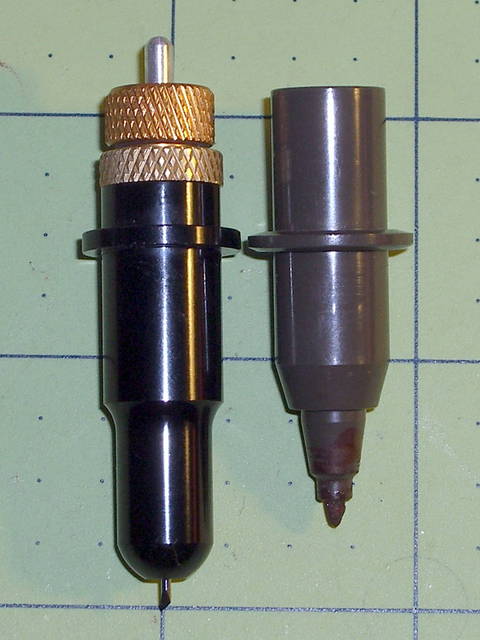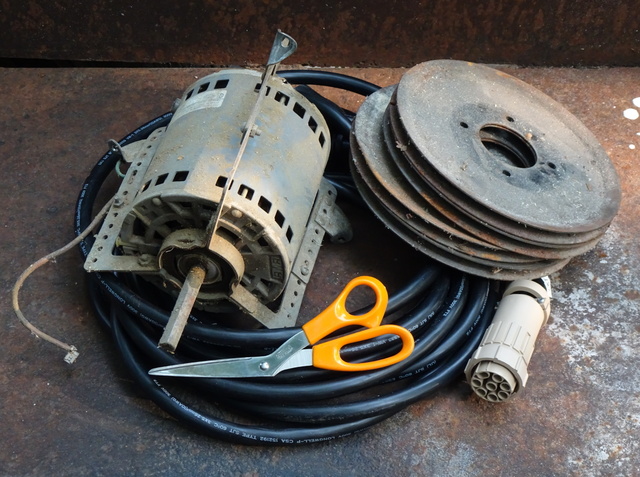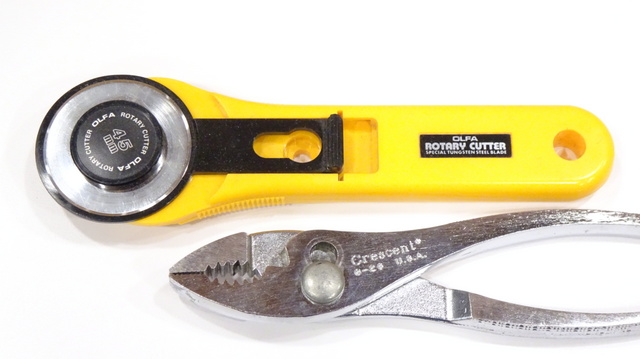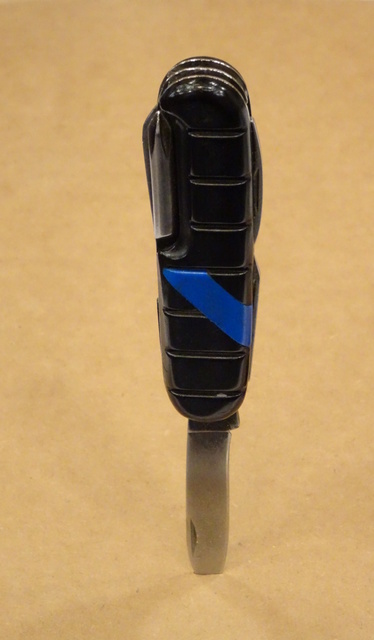Surely by now the sewn-product industry has CNC fabric cutting?
Yes, but I don’t know much about it and my acquaintances haven’t worked at places that use it. What I’ve been able to find appears to start around $30-40K for a fairly short table, with extensions available. That entry pricing only makes sense for a fairly high volume of product.
Could we do better, and is there a market for it if we could?
The Need for Low-Volume CNC Fabric Cutting
Nearly all of the attendees at Kathleen Fasanella’s sewn-product manufacturing boot camp have some interest in the sewn-product industry, but I’d say it’s a minority who are already working it as their primary occupation. Most of the attendees are entrepreneurs and would-be entrepreneurs who want to learn more about the production phase; and a high fraction work in or have worked in IT or engineering, which is part of the appeal to me.
Over dinner one evening at last fall’s boot camp, at the nerds table — you know, the one that keeps attracting people from other tables with our loud conversation and raucous laughter, and then they leave after two minutes because they find out we’re talking about characterizing the accuracy of our 3D printers and complaining how the command-line invocation of the open-source CAD software can’t yet accomplish everything that the GUI does — Gillian mentioned her desire for an affordable, low-volume CNC fabric cutter.
Her entrepreneurship goal is made-to-measure business suits for women — a market that is already well-served for men and completely lacking for women. She can do the algorithmically-based pattern drafting from (the right set of) measurements; but to be able to hit a price point to develop the idea as a successful business, the labor, duration, and space requirements for hand-cutting the fabric felt cost-prohibitive; yet the current commercially-available CNC fabric cutters are even more so.
The conversation moved on but that idea really stuck with me and I’ve been thinking about it since. Hobbyist CNC has become popular enough that even the components to build it yourself have become commoditized, so this is a good time in the history of the world to build a hobbyist CNC fabric cutter.
It should have open-source hardware and firmware. If it were to have free-as-in-beer-and-speech plans, and a distributor from whom you could buy your choice of vitamins, vitamins plus printed parts, a complete kit including frame and table, or an assembled product, the range of prices should make it available to entrepreneurs who can’t afford one now. More successful sewn-product designer/manufacturers creates more jobs in the sewn-product industry, providing more stable work across the country and around the world for a predominantly vulnerable population of women of low socio-economic and educational status. We’re not gonna solve the world’s problems; but if we have a chance to make a difference, we should take it.
How Can We Cut Fabric?
Blades or lasers, right?
Lasers are cool, but there are a lot of issues with DIY laser cutting:
- Power.
- Safety.
- Liability.
- Scorches some fabrics; melts others.
- You need sharks to attach them to, and who has sharks?
So let’s just agree that we’re talking about cutting with blades.
How should the blades move through the fabric?
- Drag.
- Scissor.
- Rotate.
- Reciprocate.
The very successful Cricut® desktop CNC cutter uses a drag knife, as does the DIY CNC cutter whose knife is shown above. The knife is mounted to a gimbal with the knife tip slightly eccentric from the gimbal’s axis; as the knife is pulled around the workpiece, it drags behind the gimbal’s axis and the gimbal passively swivels to keep the knife’s cutting edge pointed in the direction of the cut. This works really well for cutting fairly rigid materials or materials attached to a rigid backer, but will tend to push flexible materials in front of the knife.
An animatronic Edward Scissorhands would be fantastic for frightening away intruders; but I don’t want to have to design a CNC scissor mechanism.
A mechanized rotary cutter has potential, but also a couple of drawbacks I’m not keen on. Cutting with the edge of a large circle tangent to the surface you’re cutting on means you tend to have to overcut at corners, which limits how tightly you can pack pieces together. It also requires quite a bit of downforce, which in turn requires a lot of rigidity from the (say) 72″-long X-axis gantry. That rigidity increases the cost and mass of the gantry and the power required to move it, and lowers the Y-axis acceleration to have to sling that mass around, increasing job times.
So I’ve been thinking about a reciprocating knife blade. It should oscillate up and down at a high speed, possibly moving straight or possibly following a tall, narrow elliptical path. The cutting edge should be vertical or canted slightly in the direction of the cut. It will need to be actively aimed in the direction of the cut rather than passively dragged on a gimbal.
A vertically-reciprocating knife blade needs to dip below the lower surface of the fabric. That could be accomplished by having a shallow foot under the fabric to lift the fabric enough to be cut, like the industrial electric knives; but the stand that attaches the foot has to be maneuvered in from the edge of the fabric, so you can’t make plunge cuts in the middle.
An attractive alternative is using a spoilboard under the fabric. Foam board insulation is inexpensive and available at any home supply store … though it remains to be seen whether it gets torn up so quickly that the entire idea is impractical.




I ran into this issue when helping my sister start her shoe business. She only cuts leather and the pattern pieces are small so the issues we face are different than yours but you might be able to apply some of the lessons. Note that I don’t have a tech background. I spent some time going to fablabs learning to operate CNC router and laser cutter but this was the first time I tried anything like this. Mostly I learned from the internet. Our budget was $3k – $4k. I’d say $1k was lost just from trying stuff that didn’t work or wasn’t needed in the end.
CNC
We bought a Workbee CNC from Ooznest. We have a 1 m x 0.75 m table with leadscrews. We chose it primarily for the Duet controller and to support the designers. The few times I’ve needed it, the support has been fantastic.
Positives: open source, easy to modify, great forums at OpenBuilds for the CNC and at Duet for the controller, inexpensive (<$2k).
Neutral: the speed (2.5 m/min)
Negatives: the wheels. For one of our use cases, the wheels aren't rigid enough.
Machines we considered:
Stepcraft machines seem really nice and well thought out. You can buy attachments as needed and they have the cheapest ready made oscillating knife I've seen. Expensive for the size of machine you're looking for but still cheaper than Gerber, Zund, etc. and not open source. At the time, this was my top choice, but the oscillating knife had just been released and not available in the US.
CNC4Newbie machines look like are built tougher than Openbuilds ecosystem and inexpensive vs alternatives. No idea if they're good or not.
Chinese version (Bulkman???) of Workbee. Same thing but cheaper and different controller. They also sell the belt version which Ooznest no longer offers which tops out at 10 m/min.
Ecocam Oscillating Knife
Buy it and attach it to a CNC router. I tried to negotiate with fablabs to split the cost of this and attach it to their machines but couldn't come to an understanding.
Table and Hold Down
We use a PVC sheet and spread a thin layer of watered down Renia Aquilim SG. The leather is put smooth side down. One application of the glue lasts a good chunk of the day. With some colors of leather you have to use the fuzzy side down which means you have to apply glue to the table after every use.
The glue builds up over time which leads me to another advantage of the Duet. You can make a height map of the table and the CNC corrects for it as it cuts. No need to change the table for a long time or level the table with a router.
We tried a few things for hold down but the Renia was the winner for the leather. I can't remember how it did with fabric.
For fabric, Sulky KK2000 worked magic. It gets expensive and they don't ship outside the continental US.
Lastly there's vacuum. We didn't try it ourselves because the studio is so small and the noise would be unbearable. Additionally, we just can't afford the expense of the experiment were it to fail. I've used vacuum hold downs in a fablab and they are fantastic though.
The knife
We use Olfa blades. They have two models of snap-off blades that we use. One is 30 degree and the other is 9mm ultra sharp. When you search for them make sure you go to the professional side of the Olfa website. The craft side doesn't show both of those options. Its the cheapest and best alternative we found.
Cutguru is the only website I've found to easily get CNC knives if you decide to go that route.
I designed a platform and a blade holder and 3d printed the parts.The platform is attached to the Z axis. It holds a stepper motor and the blade holder attaches to the stepper motor. We use a small machinist square to zero the blade holder. Controlling the angle of the knife is easy and yet another point for the Duet CNC controller. I didn't find any other all in one hobby controller that had 5 stepper drivers.
Software
Fusion 360 : for CAD. Looking for alternatives. I don't like how they keep changing the license for hobby use and hate that I have to save files to the cloud.
Inkscape : We use it to generate G code for the CNC. You'll need to download GCodeTools extension. IMPORTANT. We use version 0.92 of Inkscape with an older version of GCodeTools. The older version of gcodetools can lift the knife at corners. The newer one doesn't have that capability making it pretty useless for tangential knife cutting.
Future experiments and goals
Rotating blade holder.
The olfa blades we use now can't cut fabric with our current hold down. Before moving to a vacuum hold down I'll try this. Round blades used in CNC's run for $50 each so I'll experiment with regular Olfa blades.
Oscillating Blade
We need it to cut foam. Thingiverse has a design I'm looking forward to trying out. Search for tangential blade. Looking forward to see what you are coming up with.
Larger table.
The bigger the better. Labor and material usage would improve. A few other startup designers we know would like to use our CNC but are limited by the size. We might go for belt driven next time just for the extra speed.
More Rigid CNC
As mentioned above the wheels used on Workbee aren't rigid. We need to punch holes in leather using a pneumatic cylinder. The gantry twists under the force. Linear guide rails are expensive and would prompt a full redesign of the Workbee. Looking for alternatives. Maybe v grove rails with metal wheels.
Camera.
Attach it to ceiling to take picture of the table.
Our table is small and the hides are irregularly shaped. Once we cut a hide for the first time we end up with a lot of smaller scraps that we need to carefully align. It's very time consuming to do but we can't throw out that much leather. If we can take a picture and align things in software instead of having to check manually it would be a huge improvement in efficiency both labor and materials.
Nesting Patterns
There is an open source project called Deepnest. If we can figure out how to implement the camera, this would be the next step to improving our workflow and reduce material usage.
Inkscape
Learn Python so I can make extensions and modify gcodetools to improve our workflow.
Vacuum Hold Down
Get a shopvac and build a table with plywood base and mdf top. Use plastic cover used when painting to cover the fabric.
Emboss leather on CNC
Design a holder for the brass logo. Use a 3d printer heater cartridge to get it hot. Controller can handle it without issue.
Stepper Motor Rotary Encoder
CUI makes inexpensive encoders unfortunately Duet controller can't handle it. Might be able to use it to zero the knife but it's not important enough to spend time one at the moment.
https://shop.stepcraft-systems.com/Oscillating-Tangential-Knife-OTK-3-for-D-Series-and-M-Series
https://www.youtube.com/watch?time_continue=88&v=0WfCpRiBctQ&feature=emb_logo